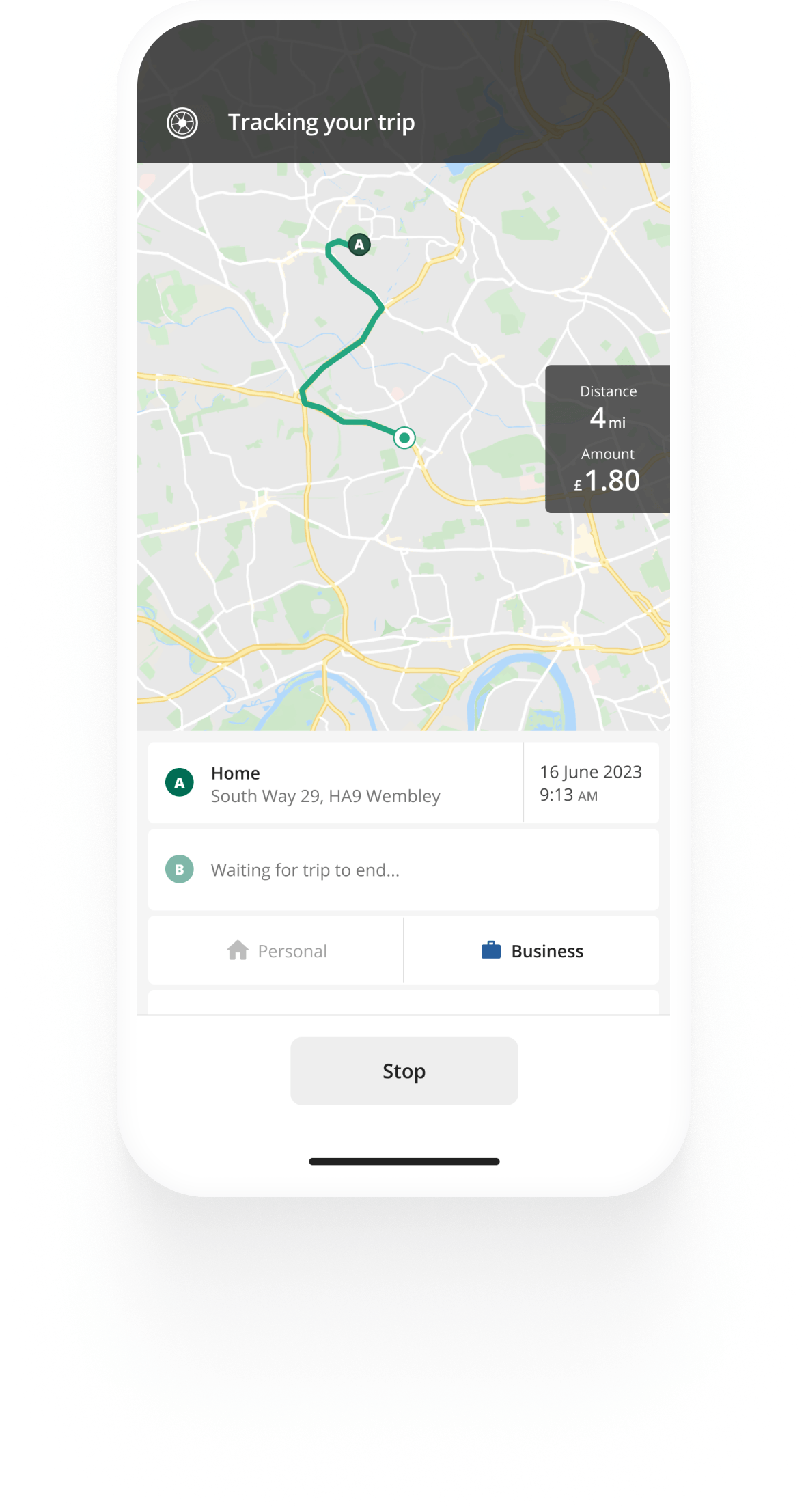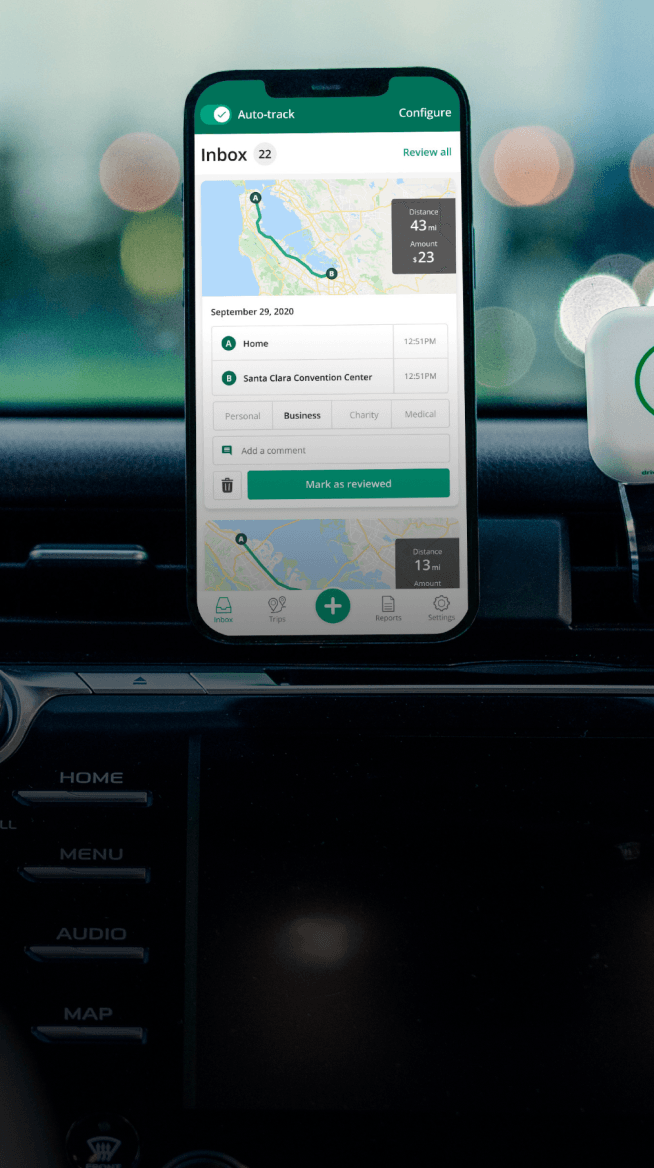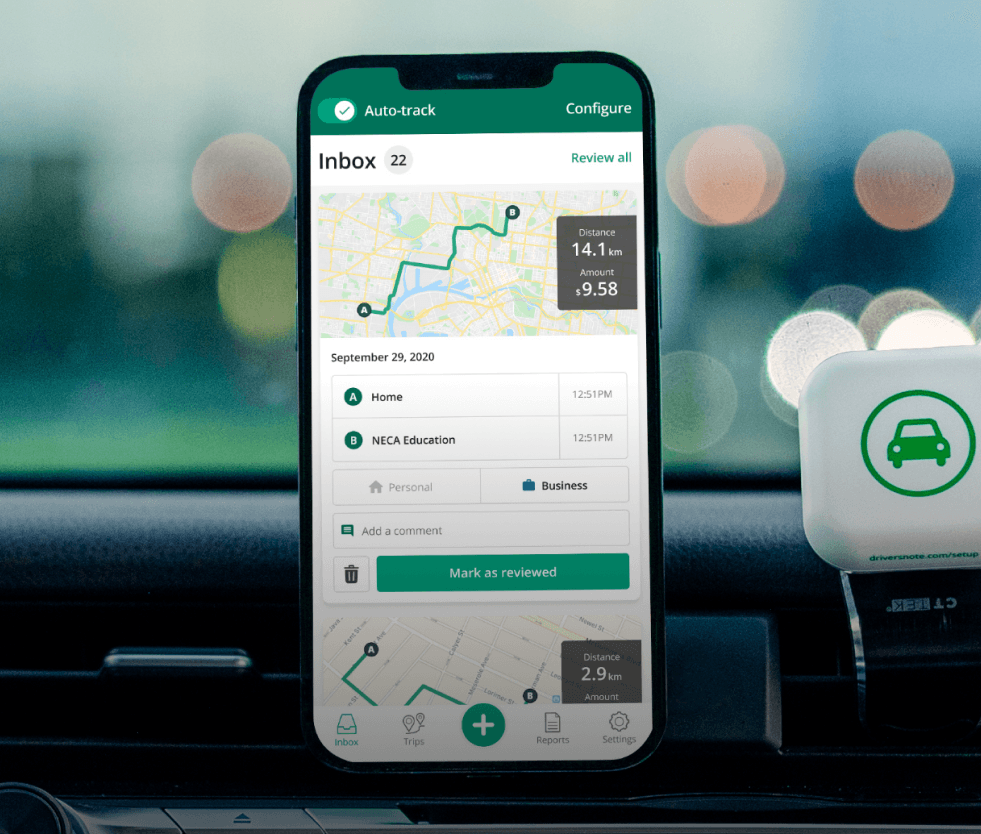Track mileage automatically
Get startedHMRC mileage
In this article
“HMRC mileage” is often used to describe the Mileage Allowance Relief (MAR) that employees, self-employed and business owners can claim for business-related mileage.
Mileage is deducted from HMRC on a pence per mile basis. The authority sets allowance mileage rates each year. The HMRC mileage rate covers all costs of owning and operating your vehicle for the business portion of your driving. These costs include lease payments, road tax, insurance, fuel, maintenance and repairs among others.
If you use your private vehicle for business driving and you are not reimbursed by your employer for these expenses, you can claim mileage allowance relief through the HMRC mileage scheme.


Mileage tracking made easy
Trusted by millions of drivers
Automate your mileage log Automate your mileage log

Automatic mileage tracking and HMRC-compliant reporting.
Get started for free Get started for freeHow to claim HMRC mileage
To claim HMRC mileage, you need to follow the below outlined steps:
- Log your business mileage in compliant HMRC records throughout the year.
- Multiply your business mileage by the HMRC mileage rate to figure out the allowance relief you are entitled to.
- Claim your HMRC mileage on your tax returns.
As an employee you will be able to claim HMRC mileage on the P87 tax form. If you are self-employed you can use Self Assessment to claim tax relief for your accrued business miles.
Keeping compliant HMRC mileage records is of the utmost importance - you need to be able to prove that your mileage allowance relief claim is substantiated.
The current mileage allowance rates are 45p per mile for the first 10,000 miles of your business driving, 25p for each mile over 10,000.
See how to claim HMRC mileage and keep compliant records for your claim in our HMRC mileage guide.
FAQ

Tired of logging mileage by hand?
Effortless. HMRC-compliant. Liberating.
Related posts
Free mileage log book template
Latest update: 7 May 2025 - 2 min read
Whether you're an employee or a business owner, it's crucial to keep good mileage records in a mileage log book.
HMRC Mileage Guide
Latest update: 2 April 2025 - 5 min read
Welcome to our guide on mileage claims and reimbursement in the UK. This guide will walk you through the rules that apply to your situation.
HMRC advisory fuel rates 2025
Latest update: 5 December 2025 - 5 min read
HMRC has announced the revised advisory fuel rates, effective 1 December 2025. See how they apply to employees and employers.
.svg)

